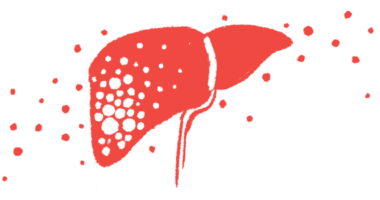Iron infusion triggers EPP attack in young British man
Case highlights importance of multidisciplinary approach to care

An iron infusion for persistently low levels of hemoglobin, or the iron-containing protein that carries oxygen in red blood cells, triggered a sudden attack of erythropoietic protoporphyria (EPP) in a 28-year-old British man.
Managing the disease required avoiding triggers as well as receiving ongoing care to prevent future flares and improve quality of life.
“In managing EPP, key learning points stress the importance of vigilance in spotting trigger variables, prompt diagnosis, light avoidance, consistent follow-up, and genetic counseling,” researchers wrote.
The man’s case was described in the study “Severe Acute Porphyria Exacerbation Post Intravenous Iron Infusion: A Case Report,” which was published in Cureus.
EPP is a type of porphyria caused by a deficiency in an enzyme called ferrochelatase, which affects the production of heme, a component of hemoglobin.
EPP can lead to sunlight hypersensitivity, liver damage
This ultimately results in the accumulation of protoporphyrin IX, a precursor molecule of heme, in red blood cells, the skin, and other tissues in the body, causing sunlight hypersensitivity and liver damage. Exposure to sunlight triggers itching and burning, and continued exposure may make the skin red and swollen.
Sudden worsening of symptoms, referred to as attacks or flares, can be caused by many triggers.
In the report, a team of researchers in the U.K. described the case of a 28-year-old man with EPP in whom an iron infusion triggered a sudden disease attack.
The man had been diagnosed with EPP as a child, but had not experienced flares since infancy. He took iron supplements for his chronic anemia, or low levels of hemoglobin, but did not tolerate these well, and was subsequently switched to into-the-vein, or intravenous, infusions of iron.
He was admitted to the emergency department due to feeling ill, nausea, and vomiting, which included some episodes of vomit of a dark color, indicating it may contain blood. He had received an iron infusion the day before developing the sudden symptoms.
Physical examination showed a rash with small red blisters on his face and arms. He reported severe skin itching and burning. The man also had a yellow tint to his skin and the whites of the eyes, pain in the abdomen’s upper right region, and an enlarged liver, which are all signs of liver damage. His cardiovascular and respiratory systems appeared normal.
In addition to anemia, lab tests showed his liver wasn’t functioning properly. He also had hypochromic microcytic anemia, which occurs when red blood cells are smaller and paler than normal, likely due to iron deficiency.
Multidisciplinary approach important to managing patient’s condition
Because the patient’s symptoms were serious, doctors from different specialties, such as dermatology, gastroenterology, and hematology (blood), were called. This team approach was important to manage his condition properly, the researchers noted.
Further tests revealed multiple gallstones, or hardened deposits of the digestive fluid bile that form in the gallbladder and become stuck in bile ducts, causing liver damage. The patient was also found to have extensive inflammation and tissue damage in the esophagus, the tube that connects the throat and stomach, and several sores in a region of the small intestine.
The man was started on proton pump inhibitors, a type of medication that reduces stomach acid production. He was also prescribed sunscreen and topical corticosteroids to reduce skin inflammation.
Moreover, “the dermatology department advised conservative management by removing the triggering factor and using periodic cold sponging, ice packs, and moisturiser in addition to being kept in a dark environment,” the researchers wrote.
The man’s symptoms were gradually lessened over the next few days. His rash showed a dramatic reduction, and his liver function gradually returned to normal levels. He was discharged after about two weeks and continued to show improved health during his year of follow-up.
“He was strongly advised against using intravenous iron infusions in the future and to keep up his sun safety routine,” the researchers wrote. “Due to an underlying ferrochelatase shortage, the injection of iron most likely boosted heme [production], which in turn caused an accumulation of [protoporphyrin IX],” ultimately resulting in skin lesions, burning sensations, and acute liver damage.
This case shows the importance of avoiding triggers like iron infusions that can worsen EPP. Early diagnosis, careful light management, and regular doctor’s visits are key, the researchers wrote. And because EPP is inherited, genetic counseling is also recommended.








